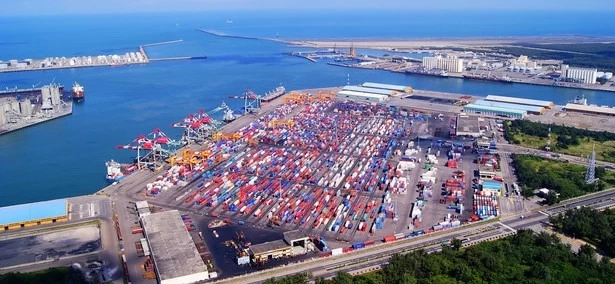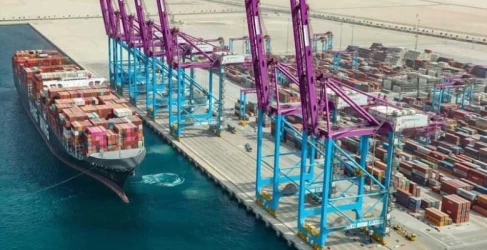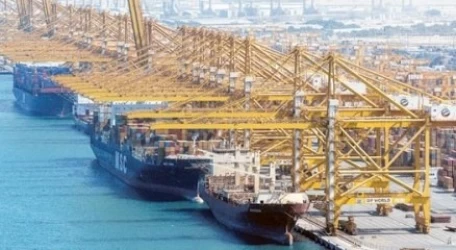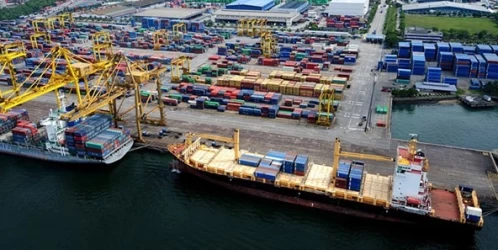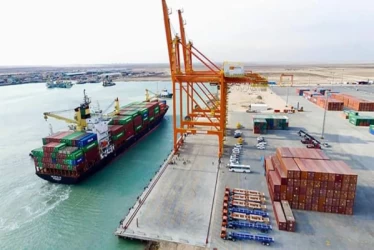Sea Freight in Taichung Port
Taichung Port, located in central Taiwan, is a pivotal hub for sea freight, playing a crucial role in the region’s economic development. Established in 1976, the port has grown to become the largest international commercial port in central Taiwan, strategically positioned between the Dajia and Dadu Rivers. This article delves into the various aspects of sea freight operations at Taichung Port, highlighting its infrastructure, services, and significance in global trade.
Strategic Location and Infrastructure
Taichung Port’s strategic location midway between Northeast and Southeast Asia makes it an ideal port-of-call for shipping routes across Asia. The port covers an expansive area of over 4,000 hectares, with a hinterland that stretches across seven cities and counties in central Taiwan. This advantageous position allows it to serve as a regional transshipment hub for bulk cargoes and a container port for near-sea shipping routes.
The port boasts a main channel that is 350 meters wide and a south northbound channel that is 400 meters wide, both with a depth of 16 meters at low tide. These dimensions enable the port to accommodate modern large-sized vessels. Additionally, Taichung Port has 58 berths equipped to handle various types of cargo, including container, bulk, general, coal, grain, and liquid cargoes, as well as passengers.
Free Trade Zone (FTZ)
One of the key features of Taichung Port is its Free Trade Zone (FTZ), which spans over 600 hectares. The FTZ offers numerous advantages, such as low-level customs intervention, in-depth processing, bonded systems, tax incentives, minimal administrative requirements, and relaxed labor restrictions. These benefits significantly reduce transaction and production costs for businesses, creating added value and fostering diversified business models.
Economic Impact and Business Environment
Taichung Port is a vital engine of economic growth in central Taiwan. It attracts a wide range of state-owned and private companies, with over 100 firms having established operations within the port. The port’s comprehensive platform for supporting services is designed to maximize economic benefits, making it an attractive destination for business investments.
The port’s dynamic approach to innovation includes the establishment of various special zones to attract and facilitate business investments. These zones are designed to create synergies with local government authorities, science-based parks, industrial parks, export-processing zones, trade parks, precision-machinery parks, and value-added agricultural centers.
Services and Operations
Taichung Port offers a wide range of services to meet the needs of its diverse clientele. The port’s professional tugboat fleet ensures the efficient handling of modern large-sized vessels. Additionally, the port’s comprehensive highway and road network connects it conveniently with other parts of Taiwan, facilitating the smooth movement of goods.
The port serves as a regional transshipment hub for bulk cargoes and a container port for near-sea shipping routes. It is also a main port-of-call for Cross-Strait passenger-cargo vessels. These services make Taichung Port a critical node in the global logistics network, supporting the efficient movement of goods across Asia and beyond.
Conclusion
In conclusion, Taichung Port is a cornerstone of sea freight operations in central Taiwan. Its strategic location, robust infrastructure, and comprehensive services make it a vital hub for global trade. The port’s Free Trade Zone and innovative business environment further enhance its appeal, attracting a diverse range of businesses and contributing significantly to the region’s economic growth. As the global shipping industry continues to evolve, Taichung Port remains committed to innovation and excellence, ensuring its continued relevance and success in the years to come.
if you have a specific question or need more details about Taichung port, Iran's logistics experts are your answer!

